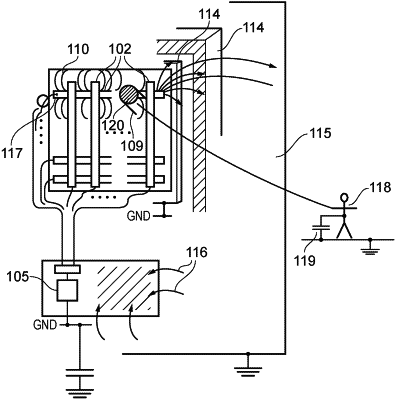| CPC G06F 3/0416 (2013.01) [G06F 3/0446 (2019.05)] | 17 Claims |

|
1. Circuitry for calculating the magnitude of a received signal from an electrode of a capacitive touch sensitive apparatus, the circuitry comprising:
a first digital signal generator configured to generate a first digital signal, the first digital signal representing a sinusoidal wave having a first frequency;
a second digital signal generator configured to generate a second digital signal, the second digital signal representing a sinusoidal wave having the first frequency, wherein the second digital signal is orthogonal to the first digital signal;
sensing circuitry for coupling to an electrode array, the sensing circuitry configured to receive the first digital signal, provide a driving signal to at least one electrode of the electrode array, wherein the driving signal is an analogue signal converted from the first digital signal, and output a received digital signal, wherein the received digital signal is indicative of a capacitive coupling experienced by the at least one electrode;
a first multiplier configured to receive the first digital signal and the received digital signal and multiply the two digital signals together;
a second multiplier configured to receive the second digital signal and the received digital signal and multiply the two digital signals together; and
a signal magnitude calculator configured to calculate the magnitude of the received digital signal based on the output from the first multiplier and the second multiplier.
|